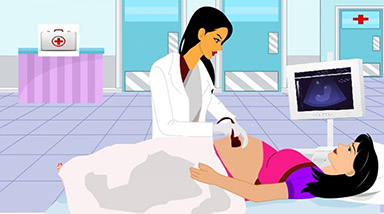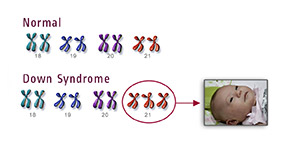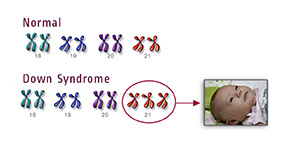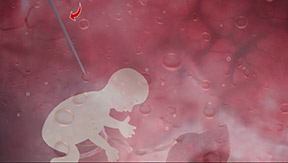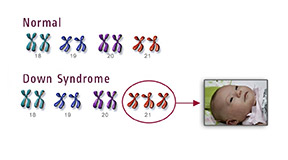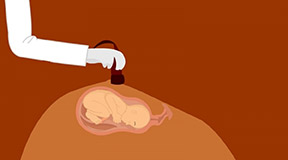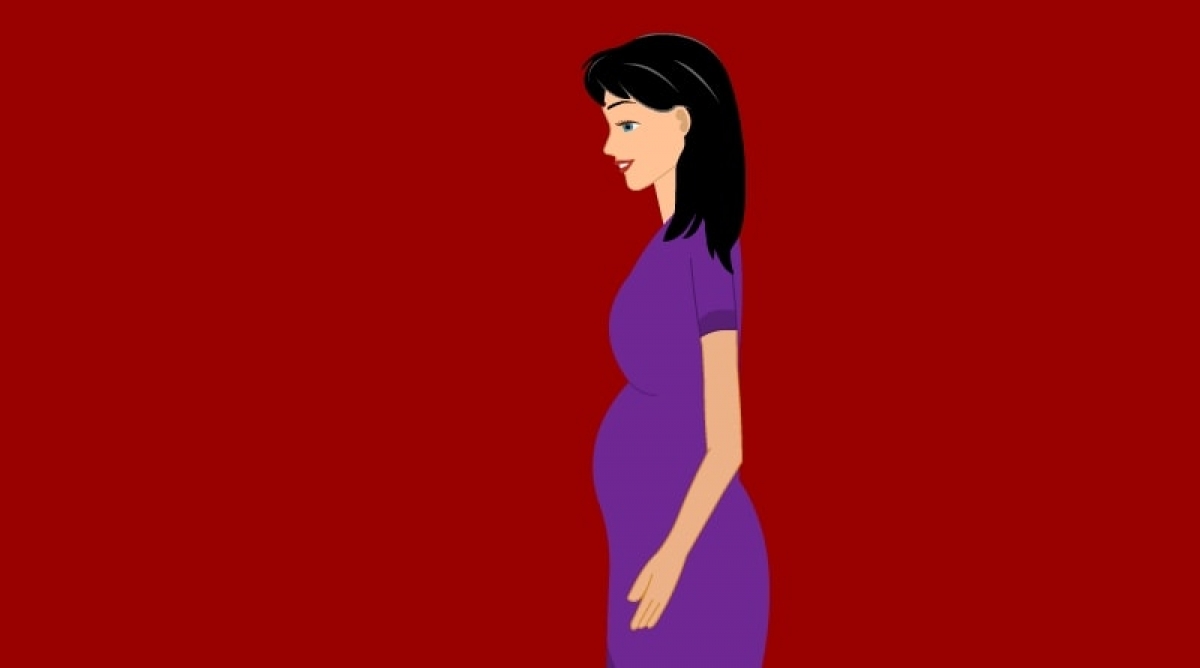Displaying items by tag: chromosomal abnormalities
Fetal bradycardia - Slowed heart rate during pregnancy
The first visit to the obstetrician is to confirm the pregnancy. This is usually done by a blood test to check for HCG levels, the same hormone which also caused a positive urine pregnancy test. Ultrasound is also done to look for gestation sac to confirm the pregnancy.
डाउन सिंड्रोम के लिए टेस्ट
बच्चे में डाउन सिंड्रोम का इलाज करने के लिए गर्भवती महिलाएं कुछ परीक्षणों से गुजरती हैं। यह आमतौर पर दो प्रकार के परीक्षणों द्वारा पहचाना जा सकता है।
- chromosomal abnormalities
- Down's Syndrome
- डाउन सिंड्रोम
- गुणसूत्र असामान्यताएं
- गर्भावस्था
- pregnancy
- गुणसूत्र दोष
- chromosomal defects
- amniocentesis
- एम्निओसेंटेसिस
- additional chromosome
- अतिरिक्त गुणसूत्र
- pregnancy blogs in hindi
- गर्भावस्था ब्लॉग्स हिंदी
- Invasive Test
- Noninvasive Test
- नानइनवेसिव टेस्ट
- इनवेसिव टेस्ट
- Down's Syndrome Screening
- न्युकल स्कैन
- Nuchal Scans
गर्भावस्था के दौरान गुणसूत्र असामान्यताएं
निषेचन के दौरान डिंब और शुक्राणु के आनुवंशिक पदार्थों के अंतरण के दौरान गुणसूत्र असामान्यताएं हो सकती हैं। गुणसूत्रों के जोड़े अच्छी तरह से जुड़ नहीं सकते हैं या टूटकर अलग सकते हैं। इस स्तर पर गुणसूत्रों को इस क्षति से भ्रूण की प्राकृतिक निष्कासन हो सकती है क्योंकि गर्भावस्था सामान्य रूप से आगे नहीं बढ़ सकती है और गर्भपात के रूप में समाप्त हो सकती है।
एम्निओसेंटेसिस (Amniocentesis) क्या है?
कई महिलाएं मुझे एम्निओसेंटेसिस के बारे में पूछती हैं। पेट से एमनीओटिक द्रव को एक सूई से निकालने वाली बात से बहुत चिंतित है। इस ब्लॉग में, मैं एम्निओसेंटेसिस की मूल बातें पर चर्चा करना चाहती हूँ।
- amniocentesis
- एम्निओसेंटेसिस
- Down's Syndrome
- डाउन सिंड्रोम स्क्रीनिंग
- एमनीओटिक द्रव
- amniotic fluid
- अम्मोनियोटिक तरल पदार्थ
- गुणसूत्र असामान्यता
- chromosomal abnormalities
- Why Amniocentesis
- एम्निओसेंटेसिस क्यों
- patau syndrome
- Edwards syndrome
- Trisomy 13
- Trisomy 18
- पटाऊ सिंड्रोम
- एडवर्ड्स सिंड्रोम
- ट्राइसोमि 13
- ट्राइसोमि 18
- pregnancy blogs in hindi
- गर्भावस्था ब्लॉग हिंदी
- pregnancy
- गर्भावस्था
Chromosomal abnormalities during pregnancy
Chromosomal abnormalities can occur during the crossover of the genetic material of the ovum and sperm during fertilization. The pairs of chromosomes may not connect well or may break off. This damage to the chromosomes at this stage may lead to the natural expulsion of the embryo as the pregnancy cannot proceed normally and may end in the form of an early miscarriage.
What is Amniocentesis?
Many women ask me about Amniocentesis. They are scared of the very thought of a needle used to draw fluid from the abdomen. In this blog, I want to discuss the basics of Amniocentesis. Why and how it is done. Don't forget to watch our video on this topic on our channel.
Most miscarriages happen in the first trimester
Pregnancy is a wonderful journey, but for some women, sadly, the journey could end prematurely in an abortion or miscarriage. According to American College of Obstetricians and Gynecologists (ACOG) anywhere from 10-25% of all clinically recognized pregnancies will end in miscarriage. Most miscarriages happen during the first trimester that is before 13 weeks. The most common cause of miscarriage

